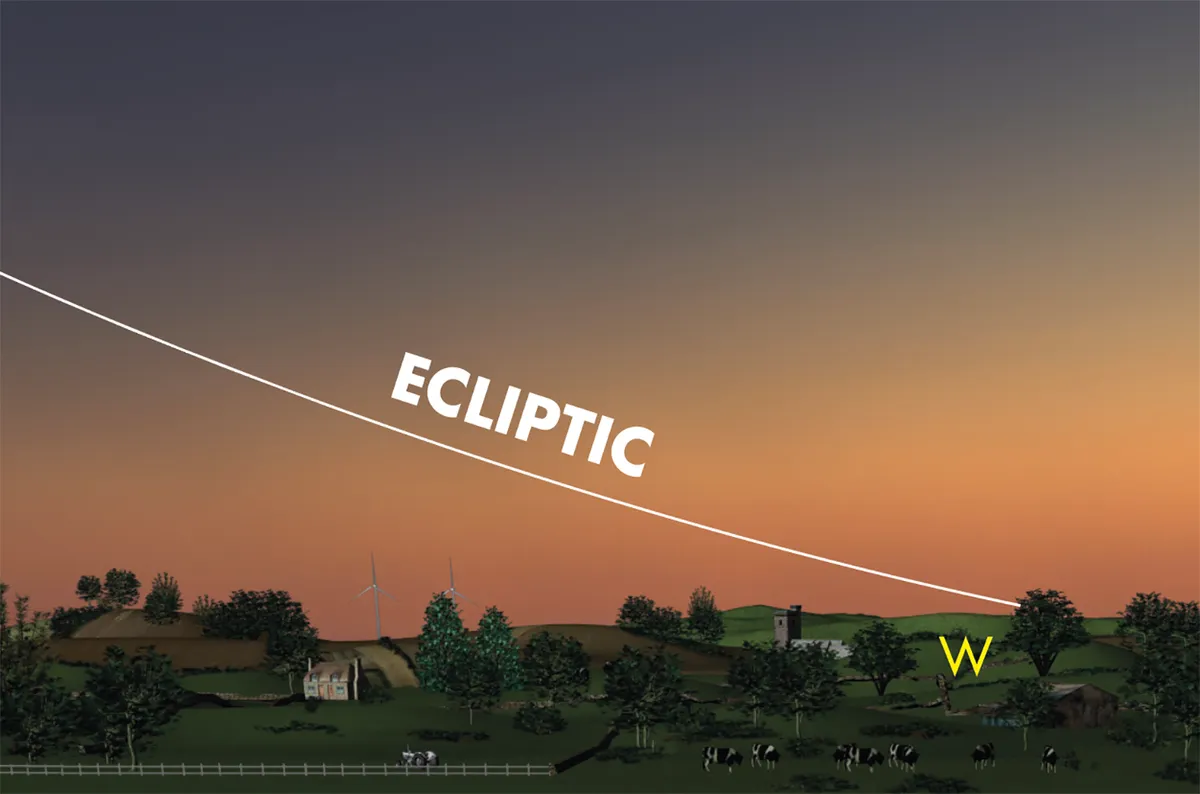The full Moon rises just after 22:00 BST (21:00 UT) on 10 July.
Being so low against the background stars, it creeps slowly across the sky at a very shallow inclination, appearing just 6° above the southeast horizon at 23:40 BST (22:40 UT).
Even when due south and at its highest position above the horizon at 01:30 BST (00:30 UT) on 11 July, it only attains an altitude of 10° as seen from the middle of the UK, although it will get higher when viewed from more southerly latitudes within the Northern Hemisphere.
For weekly stargazing advice, sign up to the BBC Sky at Night Magazine e-newsletter and subscribe to our YouTube channel

The decline to moonset is equally as shallow, the Moon setting behind the southwest horizon around 04:50 BST (03:50 UT).
With such a low declination and shallow pass across the southern horizon, this is a great time to experience the Moon illusion, the strange optical effect of the Moon appearing enormous when it's close to the horizon.
Let's look at the science behind behind why some full Moons are higher or lower than others.

Low and high full Moons explained
A full Moon occurs when the Moon is opposite the Sun in the sky or, in other words, when its ecliptic longitude is 180° from the Sun.
The ecliptic is the great circle representing the projection of Earth’s orbital plane into space and, as a result, marks the apparent path of the Sun against the stars.

The Moon’s orbit is inclined to the ecliptic by around 5°.
Imagine Earth’s orbit as a hoop (the ecliptic). Lay a second hoop on the first hoop and tilt it by 5°.
At certain times, the Moon will be above Earth’s hoop and at other times it will be below it.
The two points where the hoops intersect are known as nodes.

The node where the Moon’s orbit takes the Moon from south to north is an ascending node, the other being a descending node.
The nodes precess around the ecliptic once in 18.6 years, affecting the Moon’s declination offset from the celestial equator.
The maximum offset is equal to Earth’s axial tilt (23.5°) plus the ecliptic tilt of the Moon’s orbit (5°), resulting in a maximum declination of +28.5° or –28.5°.
This is known as a ‘major lunar standstill’.
A ‘minor lunar standstill’ occurs when the maximum offset is minimised and equals Earth’s axial tilt minus the tilt of the Moon’s orbit: a maximum declination of +18.5° or –18.5°.
Currently, we’re in the wake of a major lunar standstill and this is very evident with the full Moon on the night of 10/11 July.

Observing the Moon illusion on 10 July
If the conditions are clear, try to catch the Moon just after rising or before setting.
This can be tricky as even a bright full Moon will be affected by low atmospheric haze.
Very close to the horizon, this Moon will look artificially huge. Despite this, hold your little finger up at arm’s length and it’ll easily cover it up!
Find out more about how to debunk this optical trick with our guide on how to photograph the Moon illusion.
If you do observe the 10 July 2025 full Moon, or photograph it, get in touch via contactus@skyatnightmagazine.com
